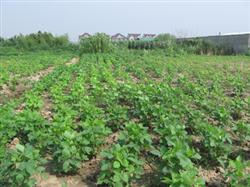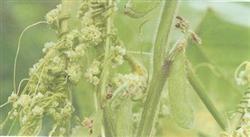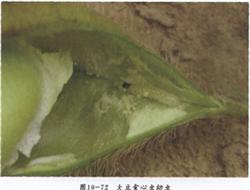Application of herbicides in soybean field

When the soybean field chooses to use herbicide varieties, it is safe and not easy to produce key points for crops, which is the first, and the second is to consider the control effect of weeds, that is, the control effect is better. Under the condition of good control effect, choose the varieties with lower drug cost as far as possible. There are two kinds of weeds in soybean field: Gramineae weeds and broad-leaved weeds. Gramineae weeds mainly include: Magnolia mandshurica, paspalum barnyardi, sage grass and so on. Broad-leaf weeds are mainly amaranth, Xanthium, iron amaranth, carp intestines, purslane and so on. The varieties of herbicides to be used should be determined according to the types of weeds growing in soybean fields, such as Gramineae weeds, Acetochlor, Metolachlor and Metolachlor can be used to seal the soil before seedlings. post-seedling stem and leaf spray can also be carried out with Jingquanling, pyrrolofen and high-efficiency floropyrin. For example, if the soybean field is dominated by broad-leaved weeds, zolazosulfonamide can be used for pre-seedling soil closure, and fluorosulfen and ethyl carboxyfluoxane can also be used for post-seedling stem and leaf spray. In the soybean field where Gramineae weeds and broad-leaved weeds are mixed, a single agent with broad herbicide spectrum or a single agent with different herbicide spectrum should be selected to eliminate both Gramineae weeds and broad-leaved weeds. Determine the amount of herbicides used. The dosage of different herbicides to control weeds in soybean field is different. The dosage of alachlor is relatively high. in the northeast spring soybean producing area, the effective amount per hectare is 2520-2880 grams, while that of chlorosulfuron is only 15-22.5 grams per hectare, the difference is 128-168 times. The dosage of the same herbicide variety also varies with the size of weeds, application methods, application environment (such as soil texture, organic matter content, soil moisture, air temperature, the use of auxiliaries or not). In general, the leaf age of weeds is older, and the amount of pesticide application should be increased appropriately; when the chemical can be used for both soil treatment and stem and leaf treatment, the dosage for soil treatment is higher than that for stem and leaf treatment. The amount of herbicide used for soil treatment should be appropriately increased when the soil texture is heavy, the content of organic matter is high, and the soil moisture is low; when the stem and leaf treatment agent is used as stem and leaf spray, the dosage should be increased appropriately when the climate is dry and the soil moisture is low. The amount of auxiliaries can also be reduced appropriately. In a word, the determination of the dosage of herbicides is one of the main factors related to the control effect. If the dosage is too low, the control effect is poor, but if the dosage is too high, it will cause waste, and it may cause drug damage to crops and aggravate the pollution to the environment.
- Prev

Control of soybean dodder
Dodder is also known as yellow rattan and tangled rice seedlings. It's a malignant weed. It harms a variety of crops and can cause the loss of soybean production, which is common in all parts of the country. (1) Morphology: the stem of soybean cocoon silk is yellow, orange-yellow or yellowish green, smooth, glabrous, linear, winding to the left on the host stem. Leaf blade reduced to membranous scales. Flowers.
- Next

The harm of soybean heart borer and its control techniques
Soybean heart borer belongs to phosphoptera, small leaf moth family, alias soybean pod moth, bean pod worm, small red worm. When the larvae eat harmful beans into pods, the annual insect feeding rate is about 10%, and in severe cases, it can reach 30%, up to 80%, and affect the quality of soybeans and lower the grade. When the soybean heart borer comes out in the field.
Related
- The first cup of black tea in spring, the flavor and history of tea gardens in Kenya, Africa
- The computer can not only choose potatoes, but also grow tea rice. AI will grow winter oolong tea champion.
- It is not only the inflated tea bitten by insects, but also engraved with the four seasons tea in Beipu.
- The Oriental Beauty Tea Festival in Zhuxian County takes the stage at the weekend to experience the plus-size feast of oil tea.
- & quot; Oriental Beauty Tea & Exploration of Emei in Hsinchu, the hometown of quot;
- The new variety of strawberry "Tainong 1" dessert is the first choice with mellow aroma. Crimson gorgeous
- History of Tea in Taiwan: from Wild Inner Mountain to Export Tea Garden
- Two types of Taiwan Oriental Beauty Black Tea won the British three-Star Award for Childhood Tea Xiang Zhang Jiaqi changed from pilot to champion tea maker.
- Banana species and varieties: the planting history of Taiwan Xianren banana and dwarf banana is long, is banana disease resistant?
- Coffee planting Technology: Qianjie Coffee from Seedling to harvesting

